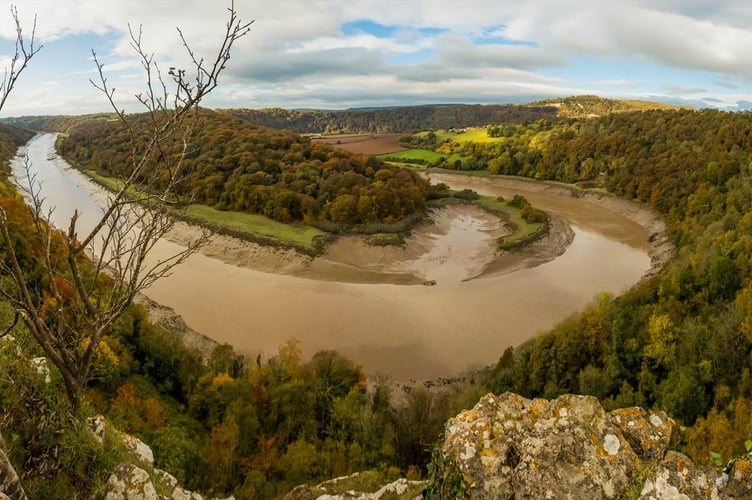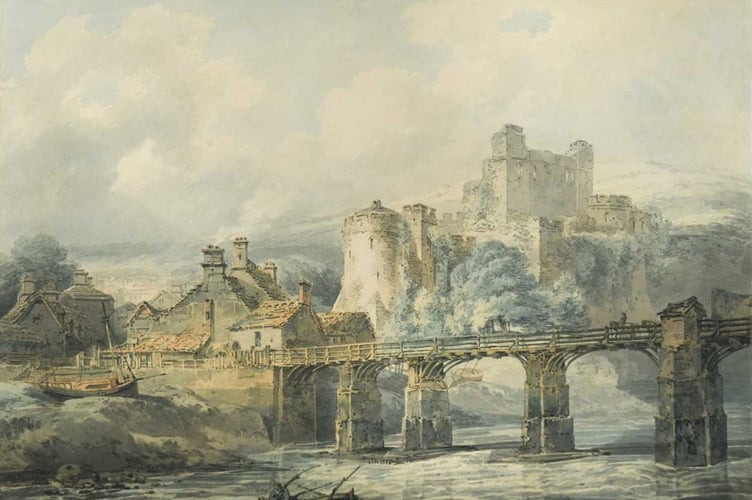THE second half of the 18th Century saw the development of the British tourism industry.
Until then, wealthy people might undertake the ‘Grand Tour’ of Europe, visiting the Greek and Roman sites that they had learned about in their classical education.

Some devout poor people might rely on charitable donations from local people to fund their journey on foot to sacred English holy places.
Otherwise there was nothing like a tourism ‘industry’ to enable people to visit parts of their own country as tourists. The poor British road system did not encourage travel for frivolous reasons like holidays.

The British tourism industry can be said to have originated in this area. In the 18th Century the Wye Valley was opened up by river transport to encourage visitors, as well as in the delivery and collection of merchandise at various locations along the river.
The River Wye had already been extensively used for commercial trading, and the local tourism industry developed around it.
Better road systems had reduced the coach journey from London to Bristol to a mere 6 days, and boat services from Bristol to Chepstow had opened up the impenetrable forest to tourists.

There was already busy commercial trade from Chepstow up the Wye to Ross-on-Wye and beyond. Organised tourism offered a sort of holiday package, perhaps the first of its kind, whereby you could take a four day cruise up and down the Wye from Chepstow to Ross-on-Wye, with overnight stays at Monmouth.
Who would want the discomfort of travel along lumpy unmade roads when it’s possible to enjoy some of the finest views in the country from a seat in a comfortable passenger boat?
Visitors were attracted by wonderful views of the extensive Wye Valley woodlands of Symonds Yat, the Kymin, Goodrich Castle, Chepstow Castle, St Briavels Castle, Devils Pulpit, Goodrich Castle, Wintours Leap, the Eagles Nest at Wyndcliffe, and especially Tintern Abbey, on their voyage to Ross.

At that time, the wider world of culture was hit by the arrival of the Romantic revolution, in literature and in art. William Wordsworth celebrated a return visit to the area with the snappily entitled poem ‘Lines Composed a Few Miles above Tintern Abbey, On Revisiting the Banks of the Wye during a Tour, July 13, 1798’.
His poetic pal Samuel Taylor Coleridge put into words his appreciation of the grand views of the Severn and Wye from the Eagles Nest at Lovers Leap at Wyndcliffe, St Arvans, overlooking what is now Chepstow Racecourse.
But it was in art that the area produced the most productive works, and artists (such as JMW Turner) flocked to the area to produce their romantic depictions of the area.

The Romantic movement had its own rules, and works had to be ‘picturesque’. When some of the artists were developing their masterpieces, they had to adjust their paintings to conform with their ideal when nature would not conform.
William Gilpin, for example, wanted to knock down part of the already ruined Tintern Abbey, to conform with this ideal. And ‘nymphs and shepherds’ or trees were added to a landscape to create a romantic ideal. If nature was not ‘picuresque’, the artist would correct it.

This artistic policy was savagely challenged in a delightful satire by artist Thomas Rowlandson and writer William Combe (1742–1823), who created the character of Doctor Syntax in a contemporary novel.
The good doctor has decided to make his fortune by travelling around the country on his old mare called Grizzle to paint romantically-conformant depictions of picturesque landscapes.
With acknowledgements to Julian Mitchell, author of ‘The Wye Tour and its Artists’.


